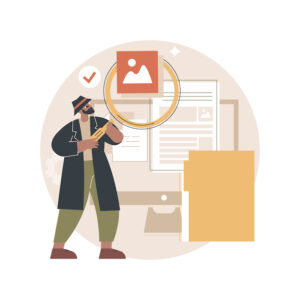Third-Party Risk & Contract Management: A Comprehensive Beginner’s Guide
- Posted on

Managing third-party risk is like a walk on a tightrope over a pit filled with financial missteps and brand damage. Not exactly like a fun day at the circus! Now, you’re probably wondering how to maintain a steady balance, particularly when it comes to navigating the dizzying heights of contract management. Breathe easy, my friend, because you’ve found the perfect guide. This comprehensive primer will unravel the intricacies of third-party risk and contract management. Remember, the clock’s ticking, the tightrope awaits, and each misstep could cost you…well, you’d rather not find out. Buckle up; it’s time to become a master in the high-stakes world of third-party risk management. I promise we’ll have a bit of fun along the way. Who said contract management had to be as dry as last year’s fruitcake?
Importance of Third-Party Risk & Contract Management
Why does this whole third-party risk and contract management thing even matter? Can’t we just cross our fingers and hope for the best? Not quite, my friend, not quite.
Imagine it this way: you’re putting together an intricate jigsaw puzzle – a gorgeous vista of the Grand Canyon, let’s say. Each piece is a different contract or partner, and when they all fit together just right, the picture is stunning, a real showstopper.
But, if one piece – just one! – is a bit off, it can throw your whole masterpiece into disarray. This is where managing third-party risk and contracts becomes our lifeline, our superhero without a cape. It’s all about having a tight grip on who you’re doing business with, what you’re agreeing to, and the potential risks you’re taking on. And yeah, I get it; it sounds a bit like a daunting task – a giant jigsaw puzzle and all, right?
But here’s the thing: in today’s hyper-connected global economy, third-party relationships are no longer a “nice to have” but a “must-have.” We’re talking about suppliers, contractors, service providers – you name it! These relationships can bring in new opportunities and competitive advantages. But they can also introduce risks that, if not managed properly, could lead to financial loss, reputational damage, and even legal troubles.
So, just as you wouldn’t leap into a pool without checking the depth, you shouldn’t dive into third-party relationships without assessing and managing the associated risks. It’s all about making informed decisions.
Now, if this sounds a bit doom and gloom, don’t worry. It’s not all about preventing disaster. A good third-party risk and contract management strategy can also open up new avenues for growth and collaboration. It’s like the difference between trying to put together that jigsaw puzzle in a dimly lit room versus under a bright light. You might eventually get there in the dark, but it’s so much easier (and more enjoyable!) when you can clearly see what you’re doing.
So buckle up. We’re about to dive deep into the realm of third-party risk and contract management. And who knows? By the end of it, you might just feel like you’ve gained a new superpower.
Understanding Third-Party Risk Management
Now that we’ve tackled why third-party risk and contract management are vital for your business, it’s time to dig deeper. Let’s hop on the exploration train and delve into the nitty-gritty of third-party risk management.
Definition and Scope of Third-Party Risk Management
First things first. What exactly do we mean when we talk about ‘third-party risk management’? Simply put, it’s all about identifying, assessing, and controlling the risks posed by external entities with which your organization has a relationship.
Think suppliers, vendors, consultants, service providers – the whole shebang. And remember, it’s not just about crossing your fingers and hoping these risks don’t bite you in the back. It’s about actively managing them to protect your organization’s interests and reputation. It’s kind of like being a superhero but for your business!
Third-Party Risks in Business Operations
What kind of risks can third parties introduce into your business operations? It’s a bit like inviting a friend to a party. They might bring a delightful dessert (hooray!) or show up with a pesky plus-one who insists on playing the banjo all night (oh no!). In the business world, these ‘pesky plus-ones’ could be anything from poor service delivery, financial instability, and data breaches to regulatory non-compliance. Remember, being aware of these potential party crashers is the first step to handling them effectively.
Challenges Faced by Organizations in Managing Third-Party Risks
Now, here’s where things get a little tricky. Managing third-party risks isn’t always a walk in the park, and businesses can face some real challenges here. For starters, there’s the sheer volume of third parties many organizations deal with – like trying to keep tabs on a bunch of hyperactive squirrels! Then, there’s the fact that each third party might pose different risks, each requiring its own unique management strategy. But don’t worry. With the right strategies and tools, these challenges can definitely be tackled head-on.
So, that’s our quick rundown on understanding third-party risk management. Remember, it’s all about being proactive and informed. Keep your eyes peeled, your wits about you, and let’s march ahead!
Best Practices in Third-Party Risk & Contract Management
We’ve done a great job understanding the what and why of third-party risk and contract management. Now, it’s time to roll up our sleeves and dive into the how. So, without further ado, let’s explore some of the best practices in third-party risk and contract management!
Implementing a Structured Risk Assessment Process
First, a well-structured risk assessment process is like the backbone of effective third-party risk management. Think of it as building the foundation for a house – you wouldn’t want to skip this step. It’s all about systematically identifying potential risks, gauging their likelihood and potential impact, and devising strategies to mitigate them. One size doesn’t fit all here. Your risk assessment process should be tailored to your organization’s specific needs and nature.
Conducting Due Diligence on Potential Third Parties
Next on our best practices list is due diligence. Imagine you’re hiring a babysitter for your beloved pooch. You wouldn’t just pick the first name from the phone book, would you? No, you’d ask around, check references, and maybe even do a trial run. The same principle applies when selecting third parties for your business. You must thoroughly vet potential partners to ensure they’re up to the task and align with your business values. After all, your reputation could be at stake.
Negotiating Contract Terms to Minimize Risk Exposure
Alright, we’ve identified our risks and vetted our third parties. The next step? It’s time to negotiate those contracts. And let me tell you, this isn’t the time to be shy! Ensuring the contract terms effectively protect your interests and minimize risk exposure is crucial. This might involve defining service levels, outlining responsibilities, or specifying remedies for breach of contract. Remember, a well-drafted contract is your safety net, so make sure it’s strong!
Establishing Effective Contract Monitoring Mechanisms
Once the ink is dry on your contract, it’s time to keep a close eye on its execution. Contract monitoring mechanisms can be a real game-changer here. These might involve regular performance reviews, audits, or even real-time data analysis. It’s kind of like having a security camera for your contracts – keeping watch and alerting you to any potential issues.
Maintaining Ongoing Communication with Third Parties
Last but definitely not least, never underestimate the power of good communication. You should maintain regular, open communication with your third parties. This could involve progress updates, feedback sessions, or just regular check-ins. It’s like keeping the lines of communication open in a relationship – it can help address issues before they become problems and foster a sense of partnership and collaboration.
So, there you have it! Implement these best practices, and you’ll be well on your way to mastering third-party risk and contract management. Remember, it’s all about being proactive, vigilant, and strategic. And with that, we’re one step closer to becoming third-party risk and contract management experts! How does that feel? Ready for the next leap?
The Impact of Technology on Third-Party Risk & Contract Management
In this next section, we’re about to embark on a thrilling journey where technology meets third-party risk and contract management. It’s no secret that technology has been disrupting traditional ways of doing business, and guess what? Our field is no exception. The impact of technology on third-party risk and contract management is both significant and exciting, offering new opportunities to streamline processes and mitigate risks. Let’s dive right in!
Role of Technology in Streamlining Contract Management Processes
First, let’s talk about how technology can help streamline contract management processes. Do you know how it’s often a chore to sift through pages of contractual text, keep track of various terms and conditions, and stay on top of key dates and milestones? Well, with the help of modern tech, these tasks can become a breeze. Picture this: a contract management system that not only stores all your contracts in one place but also provides you with notifications about key milestones and generates easy-to-read reports. Sounds like a dream, right? Well, with the wonders of technology, this dream can become a reality.
Automation and Analytics for Enhanced Risk Mitigation
Think about it, how awesome would it be to have a tool that automatically identifies potential risks in a contract or monitors third-party performance for potential red flags? With advanced algorithms and AI, we can automate many risk identification and monitoring aspects, making the process faster and more efficient. And it doesn’t stop there. Analytic tools can churn through vast amounts of data, spotting patterns and trends that would be near impossible for us humans to identify.
It’s like having a ‘risk radar’ that constantly scans the horizon and alerts you to potential storms ahead. From predictive analytics that forecast potential third-party failures based on historical and real-time data, to sentiment analysis that uncovers hidden risks in communication patterns, technology can be a powerful ally in our risk mitigation efforts.
Ultimately, the marriage of technology and third-party risk and contract management isn’t just convenient; it’s transformative. It’s about working smarter, not harder. It’s about leveraging the power of data and automation to make better-informed decisions and create more secure, efficient business relationships. And in today’s fast-paced business landscape, who wouldn’t want that? The future of third-party risk and contract management is here, and it’s electrifying!
Conclusion
As we draw this enlightening exploration to a close, it’s evident that mastering third-party risk and contract management isn’t just a luxury—it’s a necessity in today’s interconnected world. Whether it’s establishing a structured risk assessment process, conducting rigorous due diligence, or harnessing the power of technology, every step you take toward effective management reduces the chance of encountering nasty surprises down the road. Remember, the journey of a thousand miles begins with a single step. Take that step today and embark on the journey towards a more secure, efficient, and risk-aware future for your organization. After all, with the right knowledge, tools, and practices, you’re not just managing contracts and third-party risks—you’re strategically navigating the waves of business toward success.







